
Department of Anatomy
Message from the Chair
Welcome to the Department of Anatomy at the New York Institute of Technology College of Osteopathic Medicine (NYITCOM).

Our department provides instruction to students in New York Tech’s programs in osteopathic medicine and academic medicine as well as those conducting postgraduate surgical education. We strive to provide the best possible education for our medical students through small-group, hands-on learning in the anatomy lab.
Our faculty members include world-recognized leaders in vertebrate anatomy, with publications in the journals Science, Nature, and Current Biology, as well as the anatomy-specific journals Anatomical Record and Journal of Anatomy. We believe we contribute to osteopathic medicine by not only studying the body as a unit but also by studying the human body as the product of 3.5 billion years of evolution and adaptation.
Jonathan Geisler, Ph.D.
Chair, Department of Anatomy
Mission
Our mission is to provide an outstanding education in the anatomical sciences to future healthcare professionals and researchers and to advance knowledge through insightful, interdisciplinary, and impactful research on living and extinct species.
We provide osteopathic medical students comprehensive instruction in human functional and clinical anatomy through dissected body donors, lectures, workshops, and the integration of technology. We also equip osteopathic physicians with the skills needed for future learning throughout their medical practice by integrating sound scientific principles and critical thinking. We facilitate lifetime learning through faculty and facility involvement in Continuing Medical Education, and we involve senior students in training their junior colleagues through the Academic Medicine Scholars program.
We further train our students to be not only practitioners of medicine but also innovators and researchers. We accomplish this through one-on-one research mentorships with undergraduate and medical students. We also lead by example, with the entire faculty in the Department of Anatomy having impactful, externally fundable research programs in anatomical sciences, paleobiology, and evolutionary morphology. Furthermore, our department seeks to increase research and scientific literacy in the anatomical sciences, both within the New York Tech College of Osteopathic Medicine and among the broader population in which our future doctors will serve. We accomplish this through publication and dissemination of research in functional and clinical anatomy and organismal biology, and public outreach activities in conjunction with other institutions of higher learning as well as local schools and museums.
Research
Excellence in osteopathic medicine requires a keen understanding of human anatomy. Our faculty members conduct research around the globe in specialized fields including embryology, functional morphology, land-sea transitions, paleoecology, paleontology, phylogenetics, and sensory systems, each contributing to the advancement of medical knowledge and the enhancement of healthcare practices.
Embryology
The adult phenotype is the result of myriad developmental processes that occur during the growth of an individual. Through comparative embryology and manipulative experiments, we explore the developmental origins of anatomical structures to gain a mechanistic understanding of how phenotypes evolve and diversify.
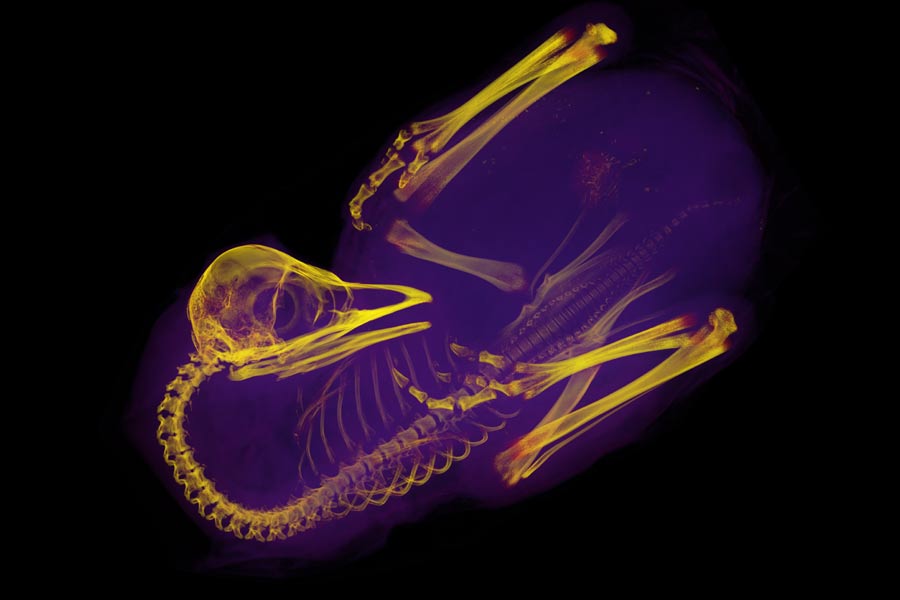
Land-Sea Transitions
We examine the transitions and the anatomical adjustments of tetrapods—four-legged vertebrates that evolved from fish, diversified on land, and then returned and re-adapted to aquatic environments—identifying the adaptations that allowed these groups to thrive in drastically different environments.
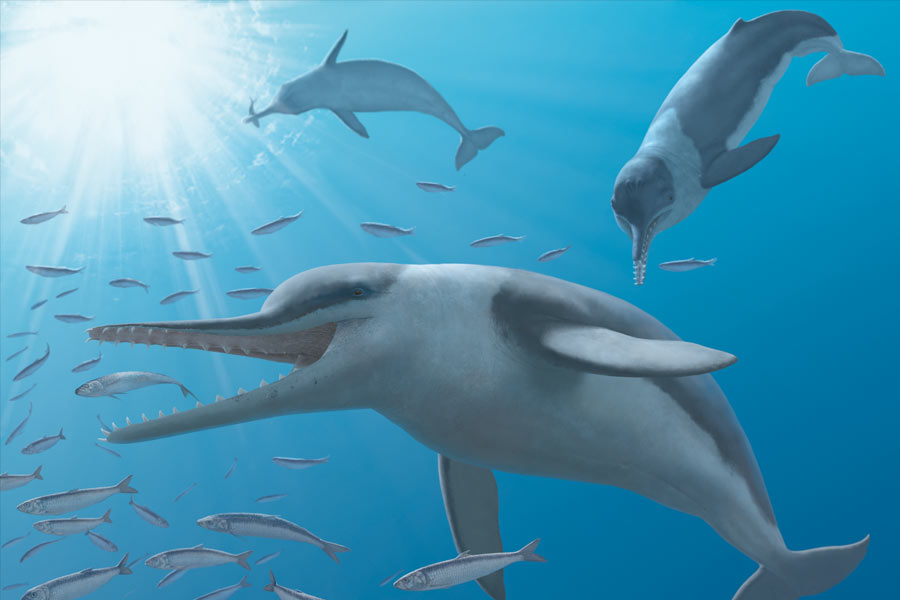
Locomotion & Functional Morphology
By employing biomechanical principles to investigate and analyze the ways in which extant animals move and interact with their environments, we seek to understand how fossil animals may have moved, helping us to unravel how evolutionary constraints influence biomechanical performance.

Microwear & Paleoecology
When we eat, tiny scratches and pits develop on the enamel surface of our teeth. We use microwear and mesowear analyses to infer the ecology of fossil organisms by comparing their patterns to those of living species.

Paleobiology
Our faculty have a wide range of taxonomic and methodological expertise in studying past life on earth. We have contributed to the discovery of new fossil species and participated in and led paleontological fieldwork around the globe.
We deploy our wide range of taxonomic and methodological expertise to study past life on earth, contributing to the discovery of new fossil species, and leading and participating in paleontological fieldwork around the globe.

Phylogenetics & Comparative Methods
We explore the relationships among diverse groups of organisms from early diapsids to primates, examining the factors that have shaped their evolutionary paths, and utilizing our expertise in tree building methodologies as well as landmark and landmark-free geometric morphometrics.

Sensory Systems
Sensory organs play a crucial role in how animals perceive and engage with their environments. Our research explores the relationship between different sensory systems and animal ecology and behavior, as well as the evolutionary trajectory of these systems across vertebrates.
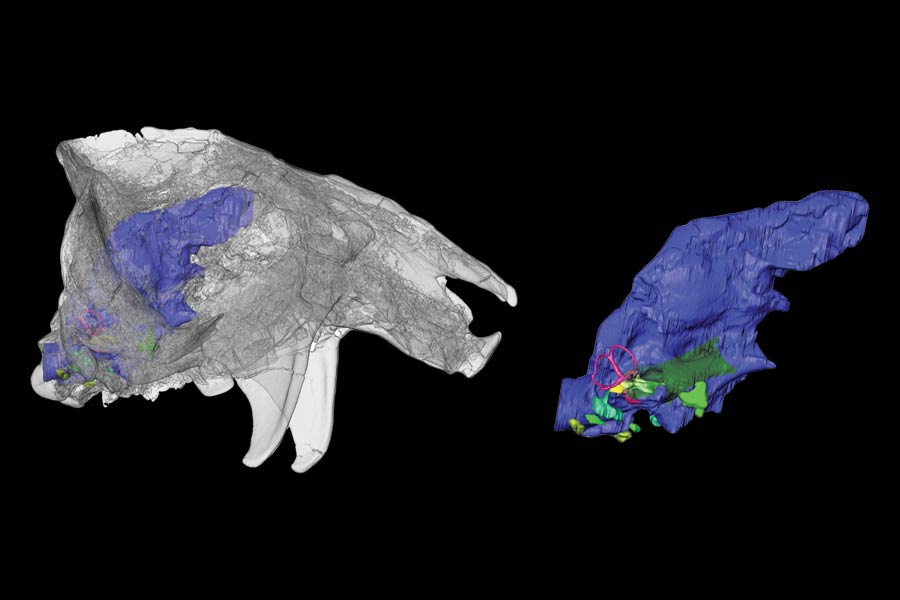
Labs & Facilities
Anatomy News
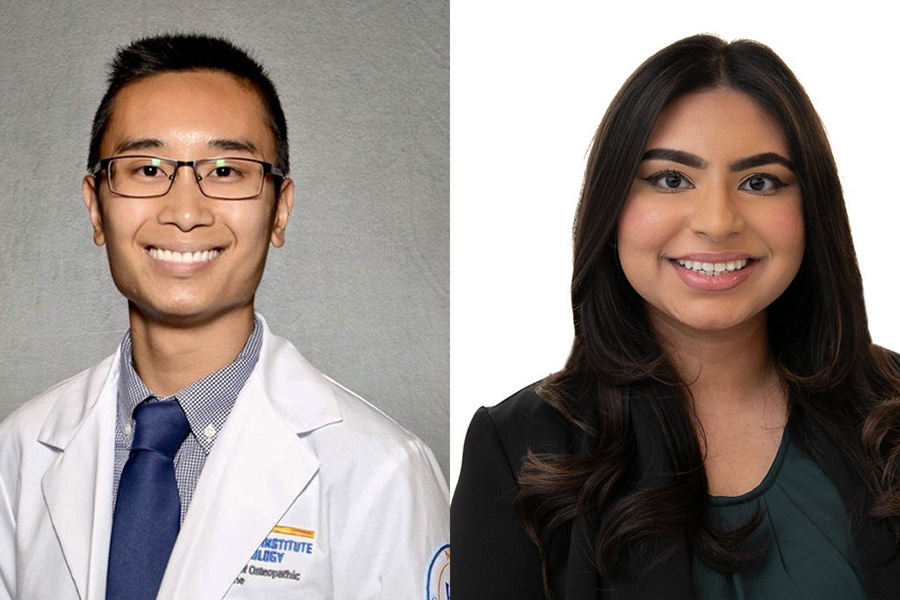
Future Physicians Attain Research Funding from the American Heart Association
Two NYITCOM students received the AHA’s Scholarship in Cardiovascular Disease to fund research into how menopause and blood vessel calcification impact cardiovascular health.

Beyond the Bones: The “Tail” of an Ancient Beast
NYITCOM Associate Professor Simone Hoffmann, Ph.D., is part of a team “unearthing” significant clues about an extinct, ancient mammal.
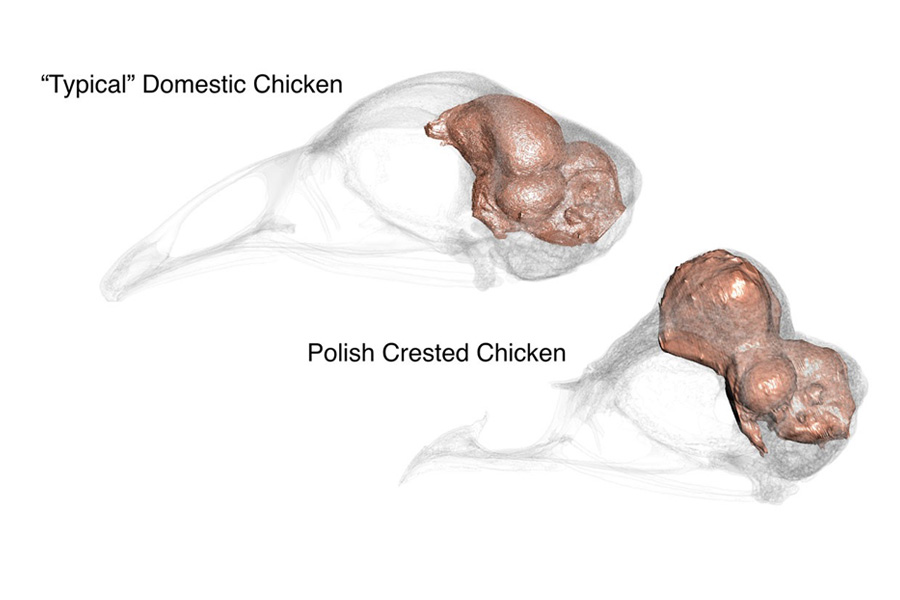
Beyond the Bones: Brainy Birds
Assistant Professor Aki Watanabe, Ph.D., published the first study from his NSF CAREER grant-funded research project; he proposes using a domesticated chicken to study how birds—and perhaps animals in general—ended up with differently shaped brains.
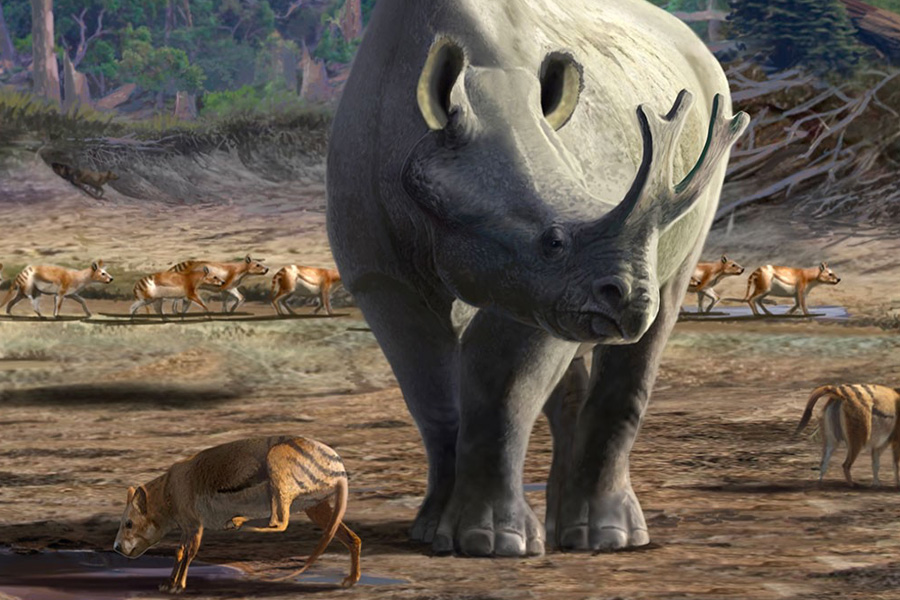
Beyond the Bones: Sizing Up Thunder Beasts
Research co-authored by Associate Professor Matthew Mihlbachler, Ph.D., explores the fossil record of an ancient relative of the rhino to help explain why natural selection might favor larger animals more often than smaller animals.

Beyond the Bones: (Climbing) Birds of a Feather
Anatomy research demonstrates how birds use their tails to climb.

Keeping Science on Its Toes
In a study published by PeerJ, Professor Nikos Solounias, Ph.D., and NYITCOM student Shannon Smith explain why a bony structure—which they dub “the bony cap”—may play a large role in finger and toe regeneration and nail growth.
Keep in Touch
Contact Us
Jonathan Geisler, Department Chair
Riland, Room 380B
516.686.7552
jgeisler@nyit.edu
Allison Arnold, Administrative Specialist
Riland, Room 380
516.686.3957
aarnol01@nyit.edu